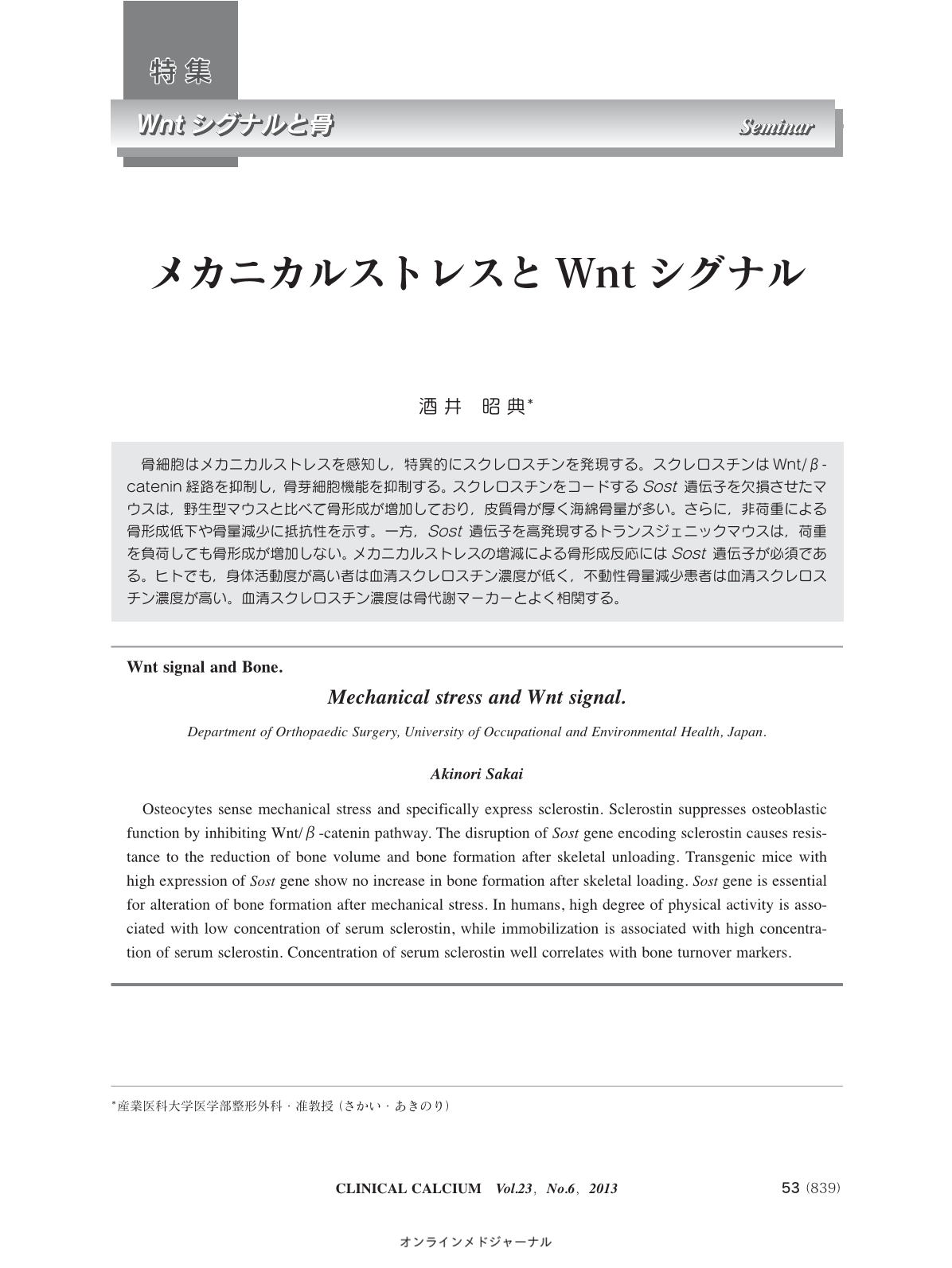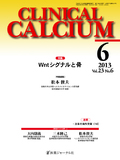Japanese
English
- 有料閲覧
- Abstract 文献概要
- 1ページ目 Look Inside
- 参考文献 Reference
骨細胞はメカニカルストレスを感知し,特異的にスクレロスチンを発現する。スクレロスチンはWnt/β-catenin経路を抑制し,骨芽細胞機能を抑制する。スクレロスチンをコードするSost遺伝子を欠損させたマウスは,野生型マウスと比べて骨形成が増加しており,皮質骨が厚く海綿骨量が多い。さらに,非荷重による骨形成低下や骨量減少に抵抗性を示す。一方,Sost遺伝子を高発現するトランスジェニックマウスは,荷重を負荷しても骨形成が増加しない。メカニカルストレスの増減による骨形成反応にはSost遺伝子が必須である。ヒトでも,身体活動度が高い者は血清スクレロスチン濃度が低く,不動性骨量減少患者は血清スクレロスチン濃度が高い。血清スクレロスチン濃度は骨代謝マーカーとよく相関する。
Osteocytes sense mechanical stress and specifically express sclerostin. Sclerostin suppresses osteoblastic function by inhibiting Wnt/β-catenin pathway. The disruption of Sost gene encoding sclerostin causes resistance to the reduction of bone volume and bone formation after skeletal unloading. Transgenic mice with high expression of Sost gene show no increase in bone formation after skeletal loading. Sost gene is essential for alteration of bone formation after mechanical stress. In humans, high degree of physical activity is associated with low concentration of serum sclerostin, while immobilization is associated with high concentration of serum sclerostin. Concentration of serum sclerostin well correlates with bone turnover markers.



